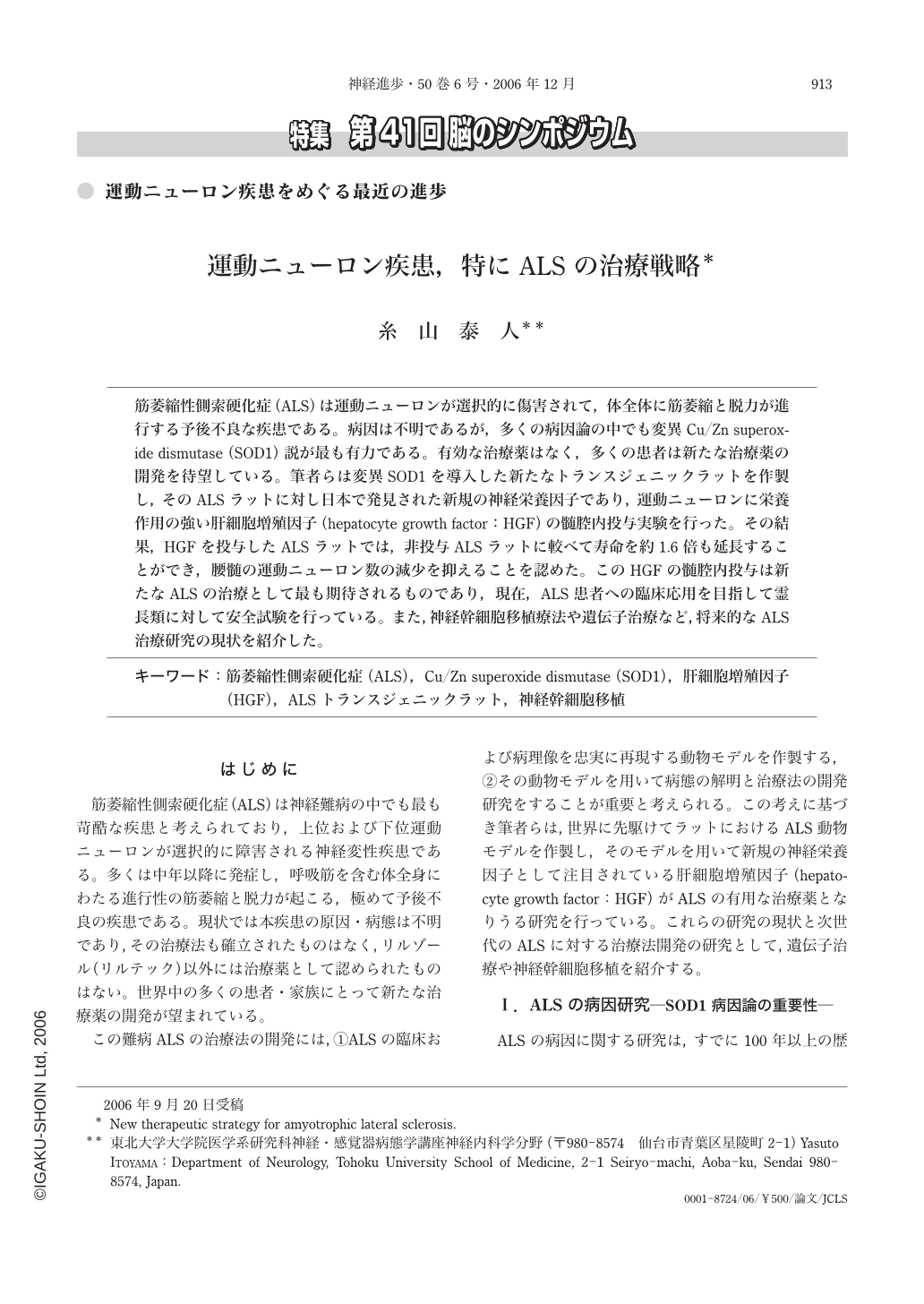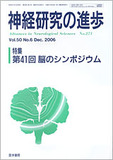Japanese
English
- 有料閲覧
- Abstract 文献概要
- 1ページ目 Look Inside
- 参考文献 Reference
筋萎縮性側索硬化症(ALS)は運動ニューロンが選択的に傷害されて,体全体に筋萎縮と脱力が進行する予後不良な疾患である。病因は不明であるが,多くの病因論の中でも変異Cu/Zn superoxide dismutase(SOD1)説が最も有力である。有効な治療薬はなく,多くの患者は新たな治療薬の開発を待望している。筆者らは変異SOD1を導入した新たなトランスジェニックラットを作製し,そのALSラットに対し日本で発見された新規の神経栄養因子であり,運動ニューロンに栄養作用の強い肝細胞増殖因子(hepatocyte growth factor:HGF)の髄腔内投与実験を行った。その結果,HGFを投与したALSラットでは,非投与ALSラットに較べて寿命を約1.6倍も延長することができ,腰髄の運動ニューロン数の減少を抑えることを認めた。このHGFの髄腔内投与は新たなALSの治療として最も期待されるものであり,現在,ALS患者への臨床応用を目指して霊長類に対して安全試験を行っている。また,神経幹細胞移植療法や遺伝子治療など,将来的なALS治療研究の現状を紹介した。
Amyotrophic lateral sclerosis(ALS)is a late onset, slowly progressive and ultimately fatal neurodegenerative disease, caused by the loss of motor neurons in the brain and spinal cord. ALS is thought to be one of the most relentless neurological diseases. The cause of ALS remains unknown, but a mutant Cu/Zn superoxide dismutase(SOD1)gene is thought to be one of most likely causes. Unfortunately, there are no effective medicines for this disease. In order to develop a new therapeutic method or medicines for ALS, we invented a new ALS rat model, SOD1 transgenic rat, which is 20 times larger in size than the mouse ALS model. Hepatocyte growth factor(HGF), which was discovered by Professor Nakamura in Osaka University, is known to have a potent neurotrophic effect on motor neurons. Our recent experimental trial in which HGF was continuously administered to ALS rats by an intrathecal route after the onset of disease showed significant effects on the clinical course and histopathological findings. ALS rats in the HGF group survived 1.6 times longer than those in the placebo group. For the clinical application of HGF for patients with ALS, we are now determining the safe doses and duration of HGF medication or possible side effects using marmosets. Additionally, genetical treatment and neural stem cell transplantation are discussed as a promising new treatment for ALS.

Copyright © 2006, Igaku-Shoin Ltd. All rights reserved.


